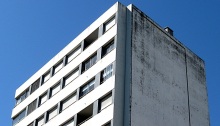Quotes: Recipe for Disaster
Recipe for Disaster Take one owner with capital budget; separate operating budget and ignore. Add one architect and heat until steamed. Expose three or more tenders, exchange parts, and trim extraneous portions. Select thinnest and discard remainder. Remove architect, save essence. Assemble subtrades, compare and trim extraneous portions. Select thinnest. Store subtrades in dark. Collect…











